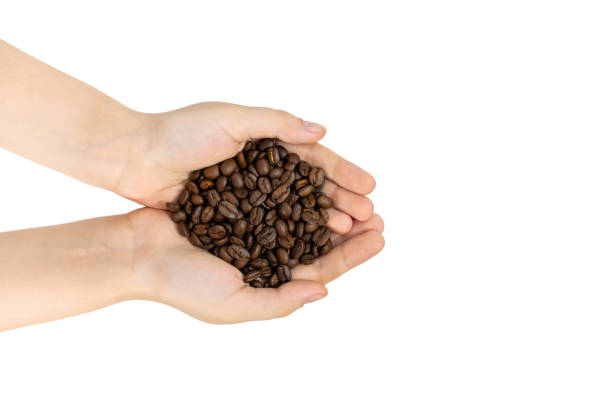It’s the chocolate season! The dark, rich, and delicious chocolate treat is making its way to shelves and corners at almost every grocery store and gift shop with Valentine’s Day around the corner. Chocolate’s many health benefits are highlighted on the packaging and numerous articles (including this one). But is chocolate a superfood that can compete with blueberries, green tea, and chia seeds?
Let’s find out: Many studies have shown dark chocolate is highly nutritious and rich in antioxidants. They can improve blood flow, blood pressure, good HDL cholesterol, improve skin quality, decrease inflammation, and even increase blood flow to the brain. Chocolate was Cocoa was once eaten to prove its healing properties.
Americans spend billions of dollars each year on chocolate, more than $20 billion. Does that amount to billions of health benefits?
It’s not.
To reap the rewards, you must eat lots of commercially-available chocolate. You know what comes with lots of commercial chocolate? There are a lot of calories.
Like most things, chocolate is best in its purest form. But, the majority of chocolate is not packaged in this manner.
Every kind of chocolate, including dark milk, nibs and bars, chocolate chips, cocoa powder, cacao, white, and even white, begins its journey on the cacao tree. These fruits produce cacao beans, also known as cocoa (or cocoa) seeds. These seeds are then fermented, dried and roasted once harvested. The star of the show is the inner nibs. They are crunchy and nutty with an earthy flavor. The nibs are ground into chocolate liquor, not a drink. It then mixes with sugar, milk powders, vanilla, spices, and other ingredients to create new flavors and textures.
Is there a way to incorporate chocolate into a healthy, balanced diet? It’s possible, but not as easy as eating a chocolate bar. The chocolate becomes less powerful when it is mashed, mixed, and processed.
ANTIOXIDANT PROTECTION
Flavonoids, a type of natural polyphenol found in plants, help to protect them against environmental toxins and repair any damage. These powerful antioxidants are found in high concentrations in cocoa beans a fruit. These powerful compounds may protect cells from damage if taken in high doses. Flavonoids account for more than 10% of the cocoa powder’s weight. That’s a lot!
HEART HELPERS
Flavonols, the main flavonoid in cocoa beans, are responsible for their main component. Flavonols are also responsible for the bitterness in raw chocolate. Flavonols have many benefits for the heart. They improve blood flow and circulation, reduce the risk of blood clotting, and can potentially lower blood pressure.
GOOD GUT BUILDERS
Catechin and epicatechin are two of the most potent flavonols found in chocolate. They increase blood antioxidant activity and decrease oxidative stress. Both epicatechins and catechin can improve the quality of our microbiota, increasing the “good bugs” and decreasing the number of pathogenic bacteria. These effects are reduced when chocolate is combined with milk.
IMMUNITY BOOSTERS
Antioxidants in cocoa beans reduce oxidative stress by lowering and inhibiting free radicals in the bloodstream. Our immune system can be triggered to overdrive by free radicals!
BRAIN BOOSTERS
Theobromine and caffeine are the mood-and-energy-boosting components found in chocolate. These substances help you feel alert and more alert. You feel tired and sleepy when adenosine binds with its receptors. According to some studies, chocolate can increase the production of serotonin (the mood stabilizer). It also contains phenylalanine (“the love molecule”). The reality is that most of these compounds can only be found in small amounts in chocolate. The “euphoria,” which we feel after eating chocolate, is more likely to be due to the way we experience it — the moment when we are satisfied with a food craving.
Can we have our chocolate cake and eat it? Yes. But the darker and more flavorful chocolate is better. These are some of the many benefits of eating chocolate in all its forms.
Nibs
Cacao nibs are one of the most healthful forms of chocolate. They are rich in antioxidants and flavonoids. Cacao nibs also have high levels of fiber and protein. Just 2 tablespoons of cacao nibs can provide 5 grams and 2.5 grams respectively. They aren’t too sweet. Cacao nibs have all the same fiber, fat, nutrients as a cacao bean. chocolate is a raw, unprocessed form of chocolate that contains no sugar. All sugar is added during processing. The nibs are slightly bitter and earthy, with a crunchy texture similar to coffee beans.
Powder
Cocoa powder and cacao are made by extracting cocoa butter from the liquor from the crushed nibs. It is a concentrated source for all the flavonoids, polyphenols and other nutrients. Higher cocoa powder content in chocolate will result in greater antioxidant power and potential. Cocoa powder has a low-calorie count (about 12 calories per tablespoon) which is a big advantage over other chocolates. It is also rich in minerals such as iron, copper, and magnesium.
Bars
This is where the complexity of chocolate begins. Each bar is unique. Many bars contain a lot of sugar, milk solids, and fats that can dilute or mitigate most of the health benefits. High-quality bars with more than 70% cacao will have the highest concentrations of flavonoids or polyphenols. Concentrated high-quality bars can satisfy sweet cravings in just a few bites. So find the dark chocolate bar that you like and nibble carefully.
Baked Goods
This category of sweets won’t be the best for you to increase your antioxidant intake. MyFitnessPal does have a large selection of healthier baked goods with chocolate. However, it is better to avoid foods high in added sugars and calories.

